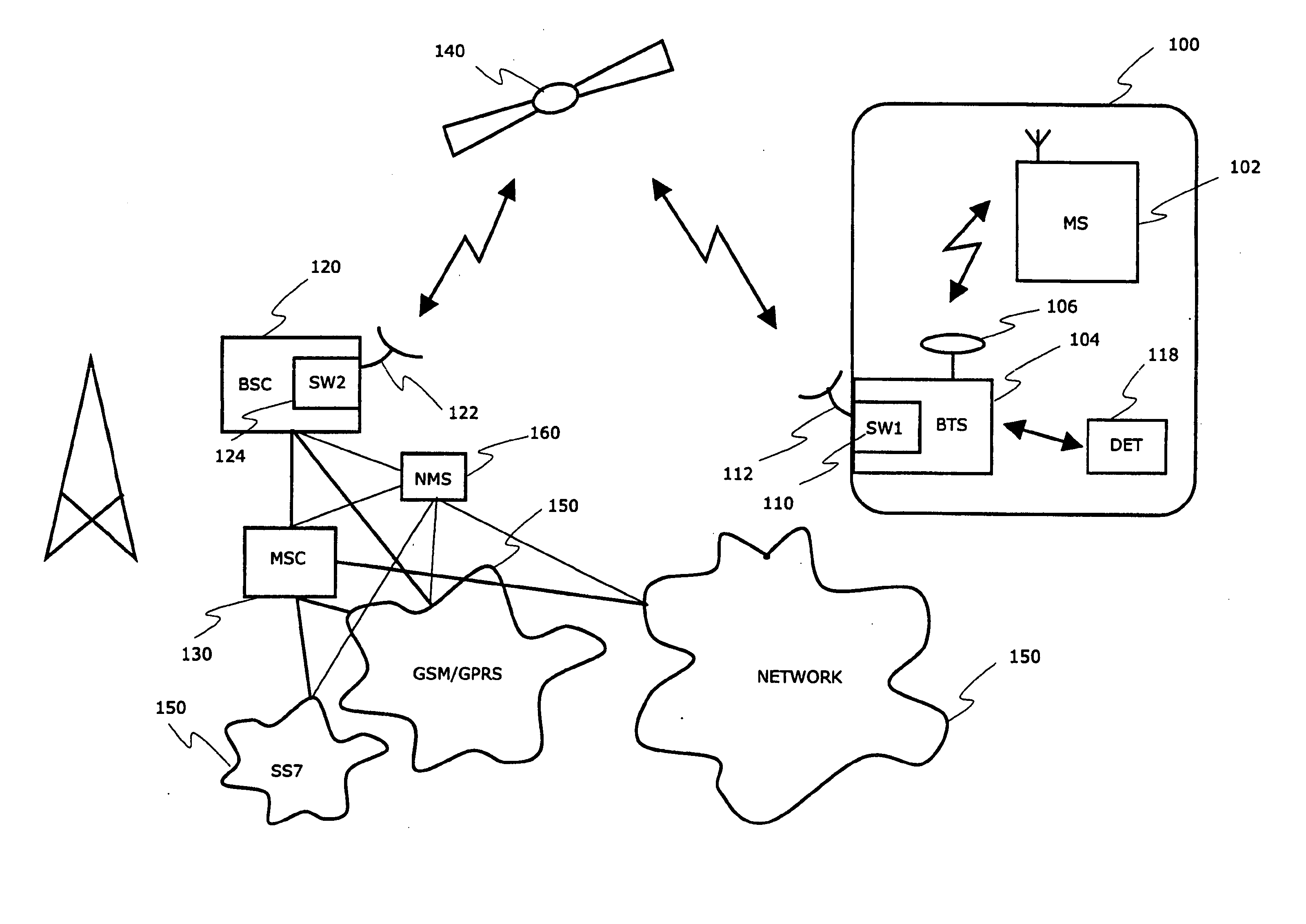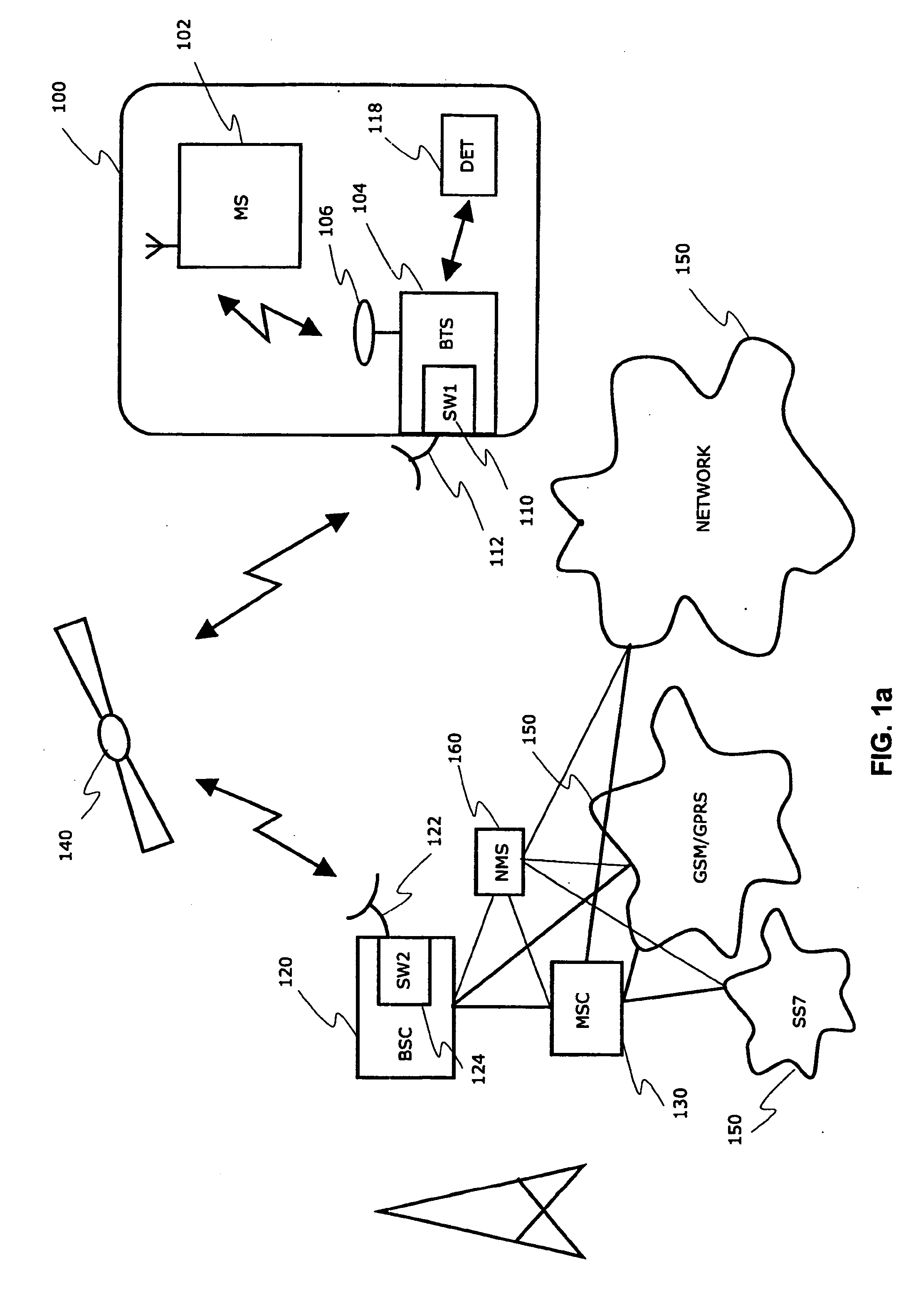Method and arrangements for wireless communication in a vehicle
a wireless communication and vehicle technology, applied in the field of mobile radio communication systems, can solve the problems of unauthorized use of a cellular phone during taxiing, take-off and landing, and restricted use of mobile phones in the air, so as to reduce possible electromagnetic interference
- Summary
- Abstract
- Description
- Claims
- Application Information
AI Technical Summary
Benefits of technology
Problems solved by technology
Method used
Image
Examples
Embodiment Construction
[0026] The present invention is generally directed to an apparatus and a method for providing a preferable operational mode of wireless communication for a wireless connection between communication devices such as a mobile terminal (MS) and a first network device, where the devices communicate via a wireless connection inside an aircraft, called an indoor connection in this description, or wireless network inside an aircraft, called an indoor network in this description. A preferable operational mode of wireless communication inside the aircraft, called an aircraft profile in this description, shall limit a transmitting power of the devices communicating via the indoor connection or indoor network to a limit power value, wherein the transmitting power is high enough to guarantee an acceptable quality for voice and data transmission inside the aircraft. At the same time the transmitting power shall be low enough not to camp on a network device outside the aircarft, called an external...
PUM
 Login to View More
Login to View More Abstract
Description
Claims
Application Information
 Login to View More
Login to View More - R&D
- Intellectual Property
- Life Sciences
- Materials
- Tech Scout
- Unparalleled Data Quality
- Higher Quality Content
- 60% Fewer Hallucinations
Browse by: Latest US Patents, China's latest patents, Technical Efficacy Thesaurus, Application Domain, Technology Topic, Popular Technical Reports.
© 2025 PatSnap. All rights reserved.Legal|Privacy policy|Modern Slavery Act Transparency Statement|Sitemap|About US| Contact US: help@patsnap.com



